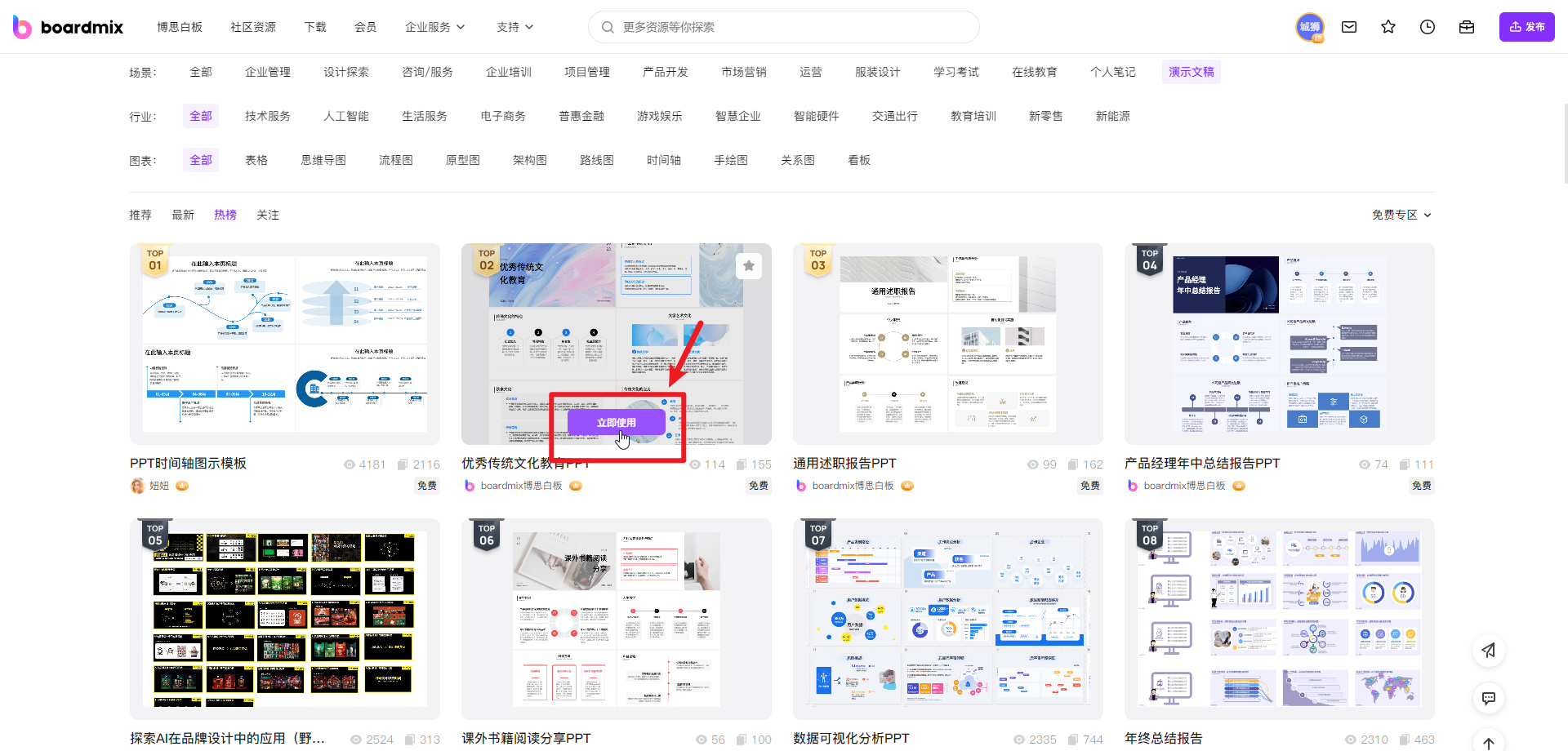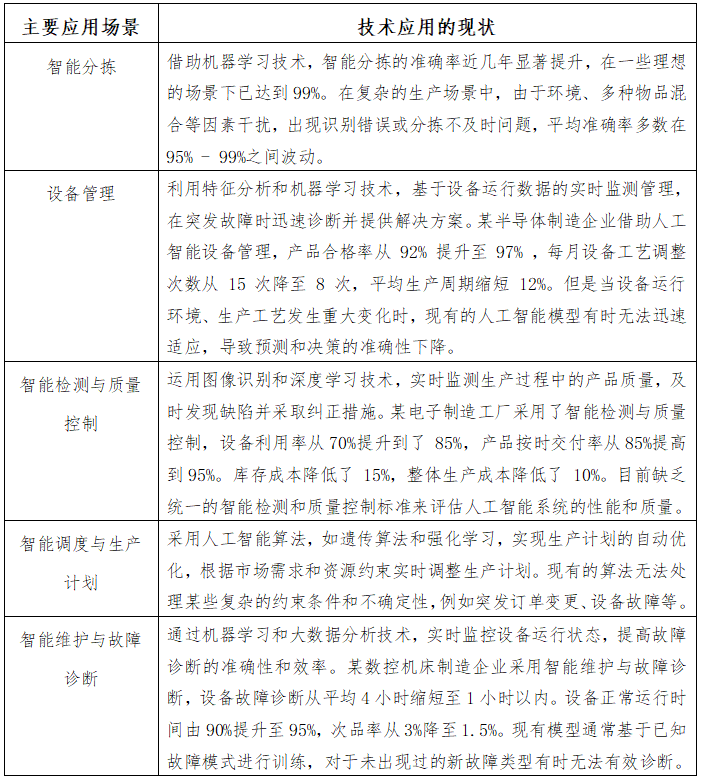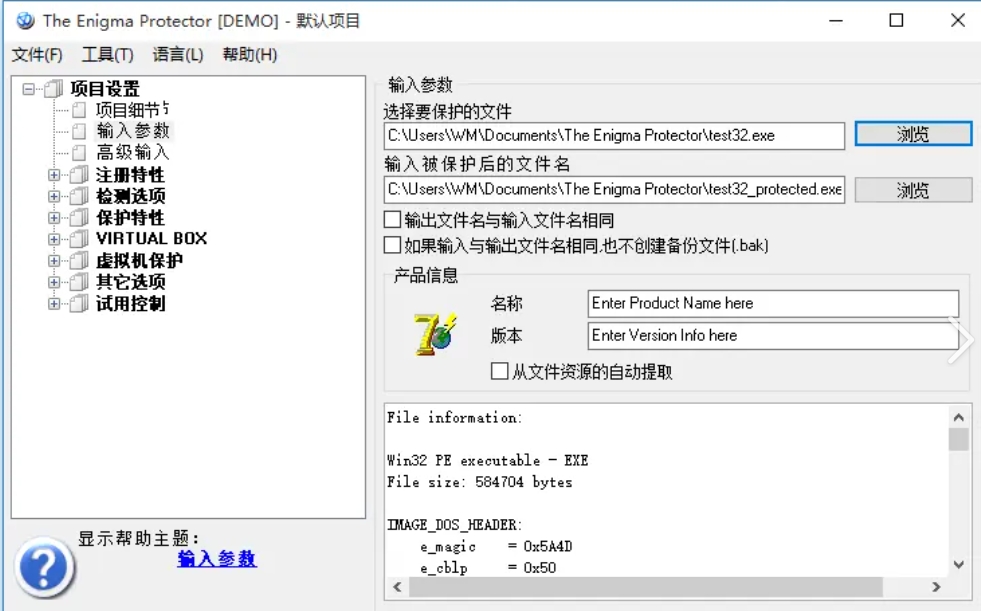1、模块说明
requests是使用Apache2 licensed 许可证的HTTP库。
用python编写。
比urllib2模块更简洁。
Request支持HTTP连接保持和连接池,支持使用cookie保持会话,支持文件上传,支持自动响应内容的编码,支持国际化的URL和POST数据自动编码。
在python内置模块的基础上进行了高度的封装,从而使得python进行网络请求时,变得人性化,使用Requests可以轻而易举的完成浏览器可有的任何操作。
现代,国际化,友好。
requests会自动实现持久连接keep-alive
2、基础入门
1)导入模块
import requests
2)发送请求的简洁
示例代码:获取一个网页(个人github)
import requests
r \= requests.get('https://github.com/Ranxf') # 最基本的不带参数的get请求
r1 = requests.get(url='http://dict.baidu.com/s', params={'wd': 'python'}) # 带参数的get请求
我们就可以使用该方式使用以下各种方法
1 requests.get(‘https://github.com/timeline.json’) # GET请求
2 requests.post(“http://httpbin.org/post”) # POST请求
3 requests.put(“http://httpbin.org/put”) # PUT请求
4 requests.delete(“http://httpbin.org/delete”) # DELETE请求
5 requests.head(“http://httpbin.org/get”) # HEAD请求
6 requests.options(“http://httpbin.org/get” ) # OPTIONS请求
3)为url传递参数
\>>> url\_params = {'key':'value'} # 字典传递参数,如果值为None的键不会被添加到url中
>>> r = requests.get('your url',params = url\_params)
\>>> print(r.url)
your url?key\=value
4)响应的内容
r.encoding #获取当前的编码
r.encoding = 'utf-8' #设置编码
r.text #以encoding解析返回内容。字符串方式的响应体,会自动根据响应头部的字符编码进行解码。
r.content #以字节形式(二进制)返回。字节方式的响应体,会自动为你解码 gzip 和 deflate 压缩。
r.headers #以字典对象存储服务器响应头,但是这个字典比较特殊,字典键不区分大小写,若键不存在则返回None
r.status\_code #响应状态码
r.raw #返回原始响应体,也就是 urllib 的 response 对象,使用 r.raw.read()
r.ok # 查看r.ok的布尔值便可以知道是否登陆成功
#\*特殊方法\*#
r.json() #Requests中内置的JSON解码器,以json形式返回,前提返回的内容确保是json格式的,不然解析出错会抛异常
r.raise\_for\_status() #失败请求(非200响应)抛出异常
post发送json请求:
1 import requests
2 import json
3
4 r = requests.post('https://api.github.com/some/endpoint', data=json.dumps({'some': 'data'}))
5 print(r.json())
5)定制头和cookie信息
header = {'user-agent': 'my-app/0.0.1''}
cookie = {'key':'value'}
r \= requests.get/post('your url',headers=header,cookies=cookie)
data = {'some': 'data'}
headers \= {'content-type': 'application/json',
'User-Agent': 'Mozilla/5.0 (X11; Ubuntu; Linux x86\_64; rv:22.0) Gecko/20100101 Firefox/22.0'}
r \= requests.post('https://api.github.com/some/endpoint', data=data, headers=headers)
print(r.text)
6)响应状态码
使用requests方法后,会返回一个response对象,其存储了服务器响应的内容,如上实例中已经提到的 r.text、r.status_code……
获取文本方式的响应体实例:当你访问 r.text 之时,会使用其响应的文本编码进行解码,并且你可以修改其编码让 r.text 使用自定义的编码进行解码。
1 r = requests.get('http://www.itwhy.org')
2 print(r.text, '\\n{}\\n'.format('\*'\*79), r.encoding)
3 r.encoding = 'GBK'
4 print(r.text, '\\n{}\\n'.format('\*'\*79), r.encoding)
示例代码:
1 import requests
2
3 r = requests.get('https://github.com/Ranxf') # 最基本的不带参数的get请求
4 print(r.status\_code) # 获取返回状态
5 r1 = requests.get(url='http://dict.baidu.com/s', params={'wd': 'python'}) # 带参数的get请求
6 print(r1.url)
7 print(r1.text) # 打印解码后的返回数据
运行结果:
/usr/bin/python3.5 /home/rxf/python3\_1000/1000/python3\_server/python3\_requests/demo1.py
200
http://dict.baidu.com/s?wd=python
…………
Process finished with exit code 0
r.status\_code #如果不是200,可以使用 r.raise\_for\_status() 抛出异常
7)响应
r.headers #返回字典类型,头信息
r.requests.headers #返回发送到服务器的头信息
r.cookies #返回cookie
r.history #返回重定向信息,当然可以在请求是加上allow\_redirects = false 阻止重定向
8)超时
r = requests.get('url',timeout=1) #设置秒数超时,仅对于连接有效
9)会话对象,能够跨请求保持某些参数
s = requests.Session()
s.auth \= ('auth','passwd')
s.headers \= {'key':'value'}
r \= s.get('url')
r1 \= s.get('url1')
10)代理
proxies = {'http':'ip1','https':'ip2' }
requests.get('url',proxies=proxies)
汇总:
# HTTP请求类型
# get类型
r = requests.get('https://github.com/timeline.json')
# post类型
r = requests.post("http://m.ctrip.com/post")
# put类型
r = requests.put("http://m.ctrip.com/put")
# delete类型
r = requests.delete("http://m.ctrip.com/delete")
# head类型
r = requests.head("http://m.ctrip.com/head")
# options类型
r = requests.options("http://m.ctrip.com/get")
# 获取响应内容
print(r.content) #以字节的方式去显示,中文显示为字符
print(r.text) #以文本的方式去显示
#URL传递参数
payload = {'keyword': '香港', 'salecityid': '2'}
r \= requests.get("http://m.ctrip.com/webapp/tourvisa/visa\_list", params=payload)
print(r.url) #示例为http://m.ctrip.com/webapp/tourvisa/visa\_list?salecityid=2&keyword=香港
#获取/修改网页编码
r = requests.get('https://github.com/timeline.json')
print (r.encoding)
#json处理
r = requests.get('https://github.com/timeline.json')
print(r.json()) # 需要先import json
# 定制请求头
url = 'http://m.ctrip.com'
headers \= {'User-Agent' : 'Mozilla/5.0 (Linux; Android 4.2.1; en-us; Nexus 4 Build/JOP40D) AppleWebKit/535.19 (KHTML, like Gecko) Chrome/18.0.1025.166 Mobile Safari/535.19'}
r \= requests.post(url, headers=headers)
print (r.request.headers)
#复杂post请求
url = 'http://m.ctrip.com'
payload \= {'some': 'data'}
r \= requests.post(url, data=json.dumps(payload)) #如果传递的payload是string而不是dict,需要先调用dumps方法格式化一下
# post多部分编码文件
url = 'http://m.ctrip.com'
files \= {'file': open('report.xls', 'rb')}
r \= requests.post(url, files=files)
# 响应状态码
r = requests.get('http://m.ctrip.com')
print(r.status\_code)
# 响应头
r = requests.get('http://m.ctrip.com')
print (r.headers)
print (r.headers\['Content-Type'\])
print (r.headers.get('content-type')) #访问响应头部分内容的两种方式
# Cookies
url = 'http://example.com/some/cookie/setting/url'
r \= requests.get(url)
r.cookies\['example\_cookie\_name'\] #读取cookies
url \= 'http://m.ctrip.com/cookies'
cookies \= dict(cookies\_are='working')
r \= requests.get(url, cookies=cookies) #发送cookies
#设置超时时间
r = requests.get('http://m.ctrip.com', timeout=0.001)
#设置访问代理
proxies = {
"http": "http://10.10.1.10:3128",
"https": "http://10.10.1.100:4444",
}
r \= requests.get('http://m.ctrip.com', proxies=proxies)
#如果代理需要用户名和密码,则需要这样:
proxies = {
"http": "http://user:pass@10.10.1.10:3128/",
}
# HTTP请求类型
# get类型
r = requests.get('https://github.com/timeline.json')
# post类型
r = requests.post("http://m.ctrip.com/post")
# put类型
r = requests.put("http://m.ctrip.com/put")
# delete类型
r = requests.delete("http://m.ctrip.com/delete")
# head类型
r = requests.head("http://m.ctrip.com/head")
# options类型
r = requests.options("http://m.ctrip.com/get")
# 获取响应内容
print(r.content) #以字节的方式去显示,中文显示为字符
print(r.text) #以文本的方式去显示
#URL传递参数
payload = {'keyword': '香港', 'salecityid': '2'}
r \= requests.get("http://m.ctrip.com/webapp/tourvisa/visa\_list", params=payload)
print(r.url) #示例为http://m.ctrip.com/webapp/tourvisa/visa\_list?salecityid=2&keyword=香港
#获取/修改网页编码
r = requests.get('https://github.com/timeline.json')
print (r.encoding)
#json处理
r = requests.get('https://github.com/timeline.json')
print(r.json()) # 需要先import json
# 定制请求头
url = 'http://m.ctrip.com'
headers \= {'User-Agent' : 'Mozilla/5.0 (Linux; Android 4.2.1; en-us; Nexus 4 Build/JOP40D) AppleWebKit/535.19 (KHTML, like Gecko) Chrome/18.0.1025.166 Mobile Safari/535.19'}
r \= requests.post(url, headers=headers)
print (r.request.headers)
#复杂post请求
url = 'http://m.ctrip.com'
payload \= {'some': 'data'}
r \= requests.post(url, data=json.dumps(payload)) #如果传递的payload是string而不是dict,需要先调用dumps方法格式化一下
# post多部分编码文件
url = 'http://m.ctrip.com'
files \= {'file': open('report.xls', 'rb')}
r \= requests.post(url, files=files)
# 响应状态码
r = requests.get('http://m.ctrip.com')
print(r.status\_code)
# 响应头
r = requests.get('http://m.ctrip.com')
print (r.headers)
print (r.headers\['Content-Type'\])
print (r.headers.get('content-type')) #访问响应头部分内容的两种方式
# Cookies
url = 'http://example.com/some/cookie/setting/url'
r \= requests.get(url)
r.cookies\['example\_cookie\_name'\] #读取cookies
url \= 'http://m.ctrip.com/cookies'
cookies \= dict(cookies\_are='working')
r \= requests.get(url, cookies=cookies) #发送cookies
#设置超时时间
r = requests.get('http://m.ctrip.com', timeout=0.001)
#设置访问代理
proxies = {
"http": "http://10.10.1.10:3128",
"https": "http://10.10.1.100:4444",
}
r \= requests.get('http://m.ctrip.com', proxies=proxies)
#如果代理需要用户名和密码,则需要这样:
proxies = {
"http": "http://user:pass@10.10.1.10:3128/",
}
3、示例代码
GET请求
1 # 1、无参数实例
2
3 import requests
4
5 ret = requests.get('https://github.com/timeline.json')
6
7 print(ret.url)
8 print(ret.text)
9
10
11
12 # 2、有参数实例
13
14 import requests
15
16 payload = {'key1': 'value1', 'key2': 'value2'}
17 ret = requests.get("http://httpbin.org/get", params=payload)
18
19 print(ret.url)
20 print(ret.text)
POST请求
# 1、基本POST实例
import requests
payload \= {'key1': 'value1', 'key2': 'value2'}
ret \= requests.post("http://httpbin.org/post", data=payload)
print(ret.text)
# 2、发送请求头和数据实例
import requests
import json
url \= 'https://api.github.com/some/endpoint'
payload \= {'some': 'data'}
headers \= {'content-type': 'application/json'}
ret \= requests.post(url, data=json.dumps(payload), headers=headers)
print(ret.text)
print(ret.cookies)
请求参数


def request(method, url, \*\*kwargs):
"""Constructs and sends a :class:\`Request <Request>\`.
:param method: method for the new :class:\`Request\` object.
:param url: URL for the new :class:\`Request\` object.
:param params: (optional) Dictionary or bytes to be sent in the query string for the :class:\`Request\`.
:param data: (optional) Dictionary, bytes, or file-like object to send in the body of the :class:\`Request\`.
:param json: (optional) json data to send in the body of the :class:\`Request\`.
:param headers: (optional) Dictionary of HTTP Headers to send with the :class:\`Request\`.
:param cookies: (optional) Dict or CookieJar object to send with the :class:\`Request\`.
:param files: (optional) Dictionary of \`\`'name': file-like-objects\`\` (or \`\`{'name': file-tuple}\`\`) for multipart encoding upload.
\`\`file-tuple\`\` can be a 2-tuple \`\`('filename', fileobj)\`\`, 3-tuple \`\`('filename', fileobj, 'content\_type')\`\`
or a 4-tuple \`\`('filename', fileobj, 'content\_type', custom\_headers)\`\`, where \`\`'content-type'\`\` is a string
defining the content type of the given file and \`\`custom\_headers\`\` a dict-like object containing additional headers
to add for the file.
:param auth: (optional) Auth tuple to enable Basic/Digest/Custom HTTP Auth.
:param timeout: (optional) How long to wait for the server to send data
before giving up, as a float, or a :ref:\`(connect timeout, read
timeout) <timeouts>\` tuple.
:type timeout: float or tuple
:param allow\_redirects: (optional) Boolean. Set to True if POST/PUT/DELETE redirect following is allowed.
:type allow\_redirects: bool
:param proxies: (optional) Dictionary mapping protocol to the URL of the proxy.
:param verify: (optional) whether the SSL cert will be verified. A CA\_BUNDLE path can also be provided. Defaults to \`\`True\`\`.
:param stream: (optional) if \`\`False\`\`, the response content will be immediately downloaded.
:param cert: (optional) if String, path to ssl client cert file (.pem). If Tuple, ('cert', 'key') pair.
:return: :class:\`Response <Response>\` object
:rtype: requests.Response
Usage::
>>> import requests
>>> req = requests.request('GET', 'http://httpbin.org/get')
<Response \[200\]>
"""
参数列表
请求参数
请求参数


def param\_method\_url():
# requests.request(method='get', url='http://127.0.0.1:8000/test/')
# requests.request(method='post', url='http://127.0.0.1:8000/test/')
pass
def param\_param():
# - 可以是字典
# - 可以是字符串
# - 可以是字节(ascii编码以内)
# requests.request(method='get',
# url='http://127.0.0.1:8000/test/',
# params={'k1': 'v1', 'k2': '水电费'})
# requests.request(method='get',
# url='http://127.0.0.1:8000/test/',
# params="k1=v1&k2=水电费&k3=v3&k3=vv3")
# requests.request(method='get',
# url='http://127.0.0.1:8000/test/',
# params=bytes("k1=v1&k2=k2&k3=v3&k3=vv3", encoding='utf8'))
# 错误
# requests.request(method='get',
# url='http://127.0.0.1:8000/test/',
# params=bytes("k1=v1&k2=水电费&k3=v3&k3=vv3", encoding='utf8'))
pass
def param\_data():
# 可以是字典
# 可以是字符串
# 可以是字节
# 可以是文件对象
# requests.request(method='POST',
# url='http://127.0.0.1:8000/test/',
# data={'k1': 'v1', 'k2': '水电费'})
# requests.request(method='POST',
# url='http://127.0.0.1:8000/test/',
# data="k1=v1; k2=v2; k3=v3; k3=v4"
# )
# requests.request(method='POST',
# url='http://127.0.0.1:8000/test/',
# data="k1=v1;k2=v2;k3=v3;k3=v4",
# headers={'Content-Type': 'application/x-www-form-urlencoded'}
# )
# requests.request(method='POST',
# url='http://127.0.0.1:8000/test/',
# data=open('data\_file.py', mode='r', encoding='utf-8'), # 文件内容是:k1=v1;k2=v2;k3=v3;k3=v4
# headers={'Content-Type': 'application/x-www-form-urlencoded'}
# )
pass
def param\_json():
# 将json中对应的数据进行序列化成一个字符串,json.dumps(...)
# 然后发送到服务器端的body中,并且Content-Type是 {'Content-Type': 'application/json'}
requests.request(method='POST',
url\='http://127.0.0.1:8000/test/',
json\={'k1': 'v1', 'k2': '水电费'})
def param\_headers():
# 发送请求头到服务器端
requests.request(method='POST',
url\='http://127.0.0.1:8000/test/',
json\={'k1': 'v1', 'k2': '水电费'},
headers\={'Content-Type': 'application/x-www-form-urlencoded'}
)
def param\_cookies():
# 发送Cookie到服务器端
requests.request(method='POST',
url\='http://127.0.0.1:8000/test/',
data\={'k1': 'v1', 'k2': 'v2'},
cookies\={'cook1': 'value1'},
)
# 也可以使用CookieJar(字典形式就是在此基础上封装)
from http.cookiejar import CookieJar
from http.cookiejar import Cookie
obj \= CookieJar()
obj.set\_cookie(Cookie(version\=0, name='c1', value='v1', port=None, domain='', path='/', secure=False, expires=None,
discard\=True, comment=None, comment\_url=None, rest={'HttpOnly': None}, rfc2109=False,
port\_specified\=False, domain\_specified=False, domain\_initial\_dot=False, path\_specified=False)
)
requests.request(method\='POST',
url\='http://127.0.0.1:8000/test/',
data\={'k1': 'v1', 'k2': 'v2'},
cookies\=obj)
def param\_files():
# 发送文件
# file\_dict = {
# 'f1': open('readme', 'rb')
# }
# requests.request(method='POST',
# url='http://127.0.0.1:8000/test/',
# files=file\_dict)
# 发送文件,定制文件名
# file\_dict = {
# 'f1': ('test.txt', open('readme', 'rb'))
# }
# requests.request(method='POST',
# url='http://127.0.0.1:8000/test/',
# files=file\_dict)
# 发送文件,定制文件名
# file\_dict = {
# 'f1': ('test.txt', "hahsfaksfa9kasdjflaksdjf")
# }
# requests.request(method='POST',
# url='http://127.0.0.1:8000/test/',
# files=file\_dict)
# 发送文件,定制文件名
# file\_dict = {
# 'f1': ('test.txt', "hahsfaksfa9kasdjflaksdjf", 'application/text', {'k1': '0'})
# }
# requests.request(method='POST',
# url='http://127.0.0.1:8000/test/',
# files=file\_dict)
pass
def param\_auth():
from requests.auth import HTTPBasicAuth, HTTPDigestAuth
ret \= requests.get('https://api.github.com/user', auth=HTTPBasicAuth('wupeiqi', 'sdfasdfasdf'))
print(ret.text)
# ret = requests.get('http://192.168.1.1',
# auth=HTTPBasicAuth('admin', 'admin'))
# ret.encoding = 'gbk'
# print(ret.text)
# ret = requests.get('http://httpbin.org/digest-auth/auth/user/pass', auth=HTTPDigestAuth('user', 'pass'))
# print(ret)
#
def param\_timeout():
# ret = requests.get('http://google.com/', timeout=1)
# print(ret)
# ret = requests.get('http://google.com/', timeout=(5, 1))
# print(ret)
pass
def param\_allow\_redirects():
ret \= requests.get('http://127.0.0.1:8000/test/', allow\_redirects=False)
print(ret.text)
def param\_proxies():
# proxies = {
# "http": "61.172.249.96:80",
# "https": "http://61.185.219.126:3128",
# }
# proxies = {'http://10.20.1.128': 'http://10.10.1.10:5323'}
# ret = requests.get("http://www.proxy360.cn/Proxy", proxies=proxies)
# print(ret.headers)
# from requests.auth import HTTPProxyAuth
#
# proxyDict = {
# 'http': '77.75.105.165',
# 'https': '77.75.105.165'
# }
# auth = HTTPProxyAuth('username', 'mypassword')
#
# r = requests.get("http://www.google.com", proxies=proxyDict, auth=auth)
# print(r.text)
pass
def param\_stream():
ret \= requests.get('http://127.0.0.1:8000/test/', stream=True)
print(ret.content)
ret.close()
# from contextlib import closing
# with closing(requests.get('http://httpbin.org/get', stream=True)) as r:
# # 在此处理响应。
# for i in r.iter\_content():
# print(i)
def requests\_session():
import requests
session \= requests.Session()
#\## 1、首先登陆任何页面,获取cookie
i1 \= session.get(url="http://dig.chouti.com/help/service")
#\## 2、用户登陆,携带上一次的cookie,后台对cookie中的 gpsd 进行授权
i2 = session.post(
url\="http://dig.chouti.com/login",
data\={
'phone': "8615131255089",
'password': "xxxxxx",
'oneMonth': ""
}
)
i3 \= session.post(
url\="http://dig.chouti.com/link/vote?linksId=8589623",
)
print(i3.text)
参数示例代码
json请求:
#! /usr/bin/python3
import requests
import json
class url\_request():
def \_\_init\_\_(self):
''' init '''
if \_\_name\_\_ == '\_\_main\_\_':
heard \= {'Content-Type': 'application/json'}
payload \= {'CountryName': '中国',
'ProvinceName': '四川省',
'L1CityName': 'chengdu',
'L2CityName': 'yibing',
'TownName': '',
'Longitude': '107.33393',
'Latitude': '33.157131',
'Language': 'CN'}
r \= requests.post("http://www.xxxxxx.com/CityLocation/json/LBSLocateCity", heards=heard, data=payload)
data \= r.json()
if r.status\_code!=200:
print('LBSLocateCity API Error' + str(r.status\_code))
print(data\['CityEntities'\]\[0\]\['CityID'\]) # 打印返回json中的某个key的value
print(data\['ResponseStatus'\]\['Ack'\])
print(json.dump(data, indent=4, sort\_keys=True, ensure\_ascii=False)) # 树形打印json,ensure\_ascii必须设为False否则中文会显示为unicode
Xml请求:
#! /usr/bin/python3
import requests
class url\_request():
def \_\_init\_\_(self):
"""init"""
if \_\_name\_\_ == '\_\_main\_\_':
heards \= {'Content-type': 'text/xml'}
XML \= '<?xml version="1.0" encoding="utf-8"?><soap:Envelope xmlns:xsi="http://www.w3.org/2001/XMLSchema-instance" xmlns:xsd="http://www.w3.org/2001/XMLSchema" xmlns:soap="http://schemas.xmlsoap.org/soap/envelope/"><soap:Body><Request xmlns="http://tempuri.org/"><jme><JobClassFullName>WeChatJSTicket.JobWS.Job.JobRefreshTicket,WeChatJSTicket.JobWS</JobClassFullName><Action>RUN</Action><Param>1</Param><HostIP>127.0.0.1</HostIP><JobInfo>1</JobInfo><NeedParallel>false</NeedParallel></jme></Request></soap:Body></soap:Envelope>'
url \= 'http://jobws.push.mobile.xxxxxxxx.com/RefreshWeiXInTokenJob/RefreshService.asmx'
r \= requests.post(url=url, heards=heards, data=XML)
data \= r.text
print(data)
状态异常处理
import requests
URL \= 'http://ip.taobao.com/service/getIpInfo.php' # 淘宝IP地址库API
try:
r \= requests.get(URL, params={'ip': '8.8.8.8'}, timeout=1)
r.raise\_for\_status() # 如果响应状态码不是 200,就主动抛出异常
except requests.RequestException as e:
print(e)
else:
result \= r.json()
print(type(result), result, sep='\\n')
上传文件
使用request模块,也可以上传文件,文件的类型会自动进行处理:
import requests
url \= 'http://127.0.0.1:8080/upload'
files \= {'file': open('/home/rxf/test.jpg', 'rb')}
#files = {'file': ('report.jpg', open('/home/lyb/sjzl.mpg', 'rb'))} #显式的设置文件名
r \= requests.post(url, files=files)
print(r.text)
request更加方便的是,可以把字符串当作文件进行上传:
import requests
url \= 'http://127.0.0.1:8080/upload'
files \= {'file': ('test.txt', b'Hello Requests.')} #必需显式的设置文件名
r \= requests.post(url, files=files)
print(r.text)
6) 身份验证
基本身份认证(HTTP Basic Auth)
import requests
from requests.auth import HTTPBasicAuth
r \= requests.get('https://httpbin.org/hidden-basic-auth/user/passwd', auth=HTTPBasicAuth('user', 'passwd'))
# r = requests.get('https://httpbin.org/hidden-basic-auth/user/passwd', auth=('user', 'passwd')) # 简写
print(r.json())
另一种非常流行的HTTP身份认证形式是摘要式身份认证,Requests对它的支持也是开箱即可用的:
requests.get(URL, auth=HTTPDigestAuth('user', 'pass')
Cookies与会话对象
如果某个响应中包含一些Cookie,你可以快速访问它们:
import requests
r \= requests.get('http://www.google.com.hk/')
print(r.cookies\['NID'\])
print(tuple(r.cookies))
要想发送你的cookies到服务器,可以使用 cookies 参数:
import requests
url \= 'http://httpbin.org/cookies'
cookies \= {'testCookies\_1': 'Hello\_Python3', 'testCookies\_2': 'Hello\_Requests'}
# 在Cookie Version 0中规定空格、方括号、圆括号、等于号、逗号、双引号、斜杠、问号、@,冒号,分号等特殊符号都不能作为Cookie的内容。
r = requests.get(url, cookies=cookies)
print(r.json())
会话对象让你能够跨请求保持某些参数,最方便的是在同一个Session实例发出的所有请求之间保持cookies,且这些都是自动处理的,甚是方便。
下面就来一个真正的实例,如下是快盘签到脚本:
import requests
headers \= {'Accept': 'text/html,application/xhtml+xml,application/xml;q=0.9,\*/\*;q=0.8',
'Accept-Encoding': 'gzip, deflate, compress',
'Accept-Language': 'en-us;q=0.5,en;q=0.3',
'Cache-Control': 'max-age=0',
'Connection': 'keep-alive',
'User-Agent': 'Mozilla/5.0 (X11; Ubuntu; Linux x86\_64; rv:22.0) Gecko/20100101 Firefox/22.0'}
s \= requests.Session()
s.headers.update(headers)
# s.auth = ('superuser', '123')
s.get('https://www.kuaipan.cn/account\_login.htm')
\_URL \= 'http://www.kuaipan.cn/index.php'
s.post(\_URL, params\={'ac':'account', 'op':'login'},
data\={'username':'\*\*\*\*@foxmail.com', 'userpwd':'\*\*\*\*\*\*\*\*', 'isajax':'yes'})
r \= s.get(\_URL, params={'ac':'zone', 'op':'taskdetail'})
print(r.json())
s.get(\_URL, params\={'ac':'common', 'op':'usersign'})
requests模块抓取网页源码并保存到文件示例
这是一个基本的文件保存操作,但这里有几个值得注意的问题:
1.安装requests包,命令行输入pip install requests即可自动安装。很多人推荐使用requests,自带的urllib.request也可以抓取网页源码
2.open方法encoding参数设为utf-8,否则保存的文件会出现乱码。
3.如果直接在cmd中输出抓取的内容,会提示各种编码错误,所以保存到文件查看。
4.with open方法是更好的写法,可以自动操作完毕后释放资源
#! /urs/bin/python3
import requests
'''requests模块抓取网页源码并保存到文件示例'''
html \= requests.get("http://www.baidu.com")
with open('test.txt', 'w', encoding='utf-8') as f:
f.write(html.text)
'''读取一个txt文件,每次读取一行,并保存到另一个txt文件中的示例'''
ff \= open('testt.txt', 'w', encoding='utf-8')
with open('test.txt', encoding="utf-8") as f:
for line in f:
ff.write(line)
ff.close()
因为在命令行中打印每次读取一行的数据,中文会出现编码错误,所以每次读取一行并保存到另一个文件,这样来测试读取是否正常。(注意open的时候制定encoding编码方式)
自动登陆"示例:


#!/usr/bin/env python
# -\*- coding:utf-8 -\*-
import requests
# ############## 方式一 ##############
"""
# ## 1、首先登陆任何页面,获取cookie
i1 = requests.get(url="http://dig.chouti.com/help/service")
i1\_cookies = i1.cookies.get\_dict()
# ## 2、用户登陆,携带上一次的cookie,后台对cookie中的 gpsd 进行授权
i2 = requests.post(
url="http://dig.chouti.com/login",
data={
'phone': "8615131255089",
'password': "xxooxxoo",
'oneMonth': ""
},
cookies=i1\_cookies
)
# ## 3、点赞(只需要携带已经被授权的gpsd即可)
gpsd = i1\_cookies\['gpsd'\]
i3 = requests.post(
url="http://dig.chouti.com/link/vote?linksId=8589523",
cookies={'gpsd': gpsd}
)
print(i3.text)
"""
# ############## 方式二 ##############
"""
import requests
session = requests.Session()
i1 = session.get(url="http://dig.chouti.com/help/service")
i2 = session.post(
url="http://dig.chouti.com/login",
data={
'phone': "8615131255089",
'password': "xxooxxoo",
'oneMonth': ""
}
)
i3 = session.post(
url="http://dig.chouti.com/link/vote?linksId=8589523"
)
print(i3.text)
"""
抽屉新热榜


#!/usr/bin/env python
# -\*- coding:utf-8 -\*-
import requests
from bs4 import BeautifulSoup
# ############## 方式一 ##############
#
# # 1. 访问登陆页面,获取 authenticity\_token
# i1 = requests.get('https://github.com/login')
# soup1 = BeautifulSoup(i1.text, features='lxml')
# tag = soup1.find(name='input', attrs={'name': 'authenticity\_token'})
# authenticity\_token = tag.get('value')
# c1 = i1.cookies.get\_dict()
# i1.close()
#
# # 1. 携带authenticity\_token和用户名密码等信息,发送用户验证
# form\_data = {
# "authenticity\_token": authenticity\_token,
# "utf8": "",
# "commit": "Sign in",
# "login": "wupeiqi@live.com",
# 'password': 'xxoo'
# }
#
# i2 = requests.post('https://github.com/session', data=form\_data, cookies=c1)
# c2 = i2.cookies.get\_dict()
# c1.update(c2)
# i3 = requests.get('https://github.com/settings/repositories', cookies=c1)
#
# soup3 = BeautifulSoup(i3.text, features='lxml')
# list\_group = soup3.find(name='div', class\_='listgroup')
#
# from bs4.element import Tag
#
# for child in list\_group.children:
# if isinstance(child, Tag):
# project\_tag = child.find(name='a', class\_='mr-1')
# size\_tag = child.find(name='small')
# temp = "项目:%s(%s); 项目路径:%s" % (project\_tag.get('href'), size\_tag.string, project\_tag.string, )
# print(temp)
# ############## 方式二 ##############
# session = requests.Session()
# # 1. 访问登陆页面,获取 authenticity\_token
# i1 = session.get('https://github.com/login')
# soup1 = BeautifulSoup(i1.text, features='lxml')
# tag = soup1.find(name='input', attrs={'name': 'authenticity\_token'})
# authenticity\_token = tag.get('value')
# c1 = i1.cookies.get\_dict()
# i1.close()
#
# # 1. 携带authenticity\_token和用户名密码等信息,发送用户验证
# form\_data = {
# "authenticity\_token": authenticity\_token,
# "utf8": "",
# "commit": "Sign in",
# "login": "wupeiqi@live.com",
# 'password': 'xxoo'
# }
#
# i2 = session.post('https://github.com/session', data=form\_data)
# c2 = i2.cookies.get\_dict()
# c1.update(c2)
# i3 = session.get('https://github.com/settings/repositories')
#
# soup3 = BeautifulSoup(i3.text, features='lxml')
# list\_group = soup3.find(name='div', class\_='listgroup')
#
# from bs4.element import Tag
#
# for child in list\_group.children:
# if isinstance(child, Tag):
# project\_tag = child.find(name='a', class\_='mr-1')
# size\_tag = child.find(name='small')
# temp = "项目:%s(%s); 项目路径:%s" % (project\_tag.get('href'), size\_tag.string, project\_tag.string, )
# print(temp)
github


#!/usr/bin/env python
# -\*- coding:utf-8 -\*-
import time
import requests
from bs4 import BeautifulSoup
session \= requests.Session()
i1 \= session.get(
url\='https://www.zhihu.com/#signin',
headers\={
'User-Agent': 'Mozilla/5.0 (Macintosh; Intel Mac OS X 10\_10\_5) AppleWebKit/537.36 (KHTML, like Gecko) Chrome/54.0.2840.98 Safari/537.36',
}
)
soup1 \= BeautifulSoup(i1.text, 'lxml')
xsrf\_tag \= soup1.find(name='input', attrs={'name': '\_xsrf'})
xsrf \= xsrf\_tag.get('value')
current\_time \= time.time()
i2 \= session.get(
url\='https://www.zhihu.com/captcha.gif',
params\={'r': current\_time, 'type': 'login'},
headers\={
'User-Agent': 'Mozilla/5.0 (Macintosh; Intel Mac OS X 10\_10\_5) AppleWebKit/537.36 (KHTML, like Gecko) Chrome/54.0.2840.98 Safari/537.36',
})
with open('zhihu.gif', 'wb') as f:
f.write(i2.content)
captcha \= input('请打开zhihu.gif文件,查看并输入验证码:')
form\_data \= {
"\_xsrf": xsrf,
'password': 'xxooxxoo',
"captcha": 'captcha',
'email': '424662508@qq.com'
}
i3 \= session.post(
url\='https://www.zhihu.com/login/email',
data\=form\_data,
headers\={
'User-Agent': 'Mozilla/5.0 (Macintosh; Intel Mac OS X 10\_10\_5) AppleWebKit/537.36 (KHTML, like Gecko) Chrome/54.0.2840.98 Safari/537.36',
}
)
i4 \= session.get(
url\='https://www.zhihu.com/settings/profile',
headers\={
'User-Agent': 'Mozilla/5.0 (Macintosh; Intel Mac OS X 10\_10\_5) AppleWebKit/537.36 (KHTML, like Gecko) Chrome/54.0.2840.98 Safari/537.36',
}
)
soup4 \= BeautifulSoup(i4.text, 'lxml')
tag \= soup4.find(id='rename-section')
nick\_name \= tag.find('span',class\_='name').string
print(nick\_name)
知乎


#!/usr/bin/env python
# -\*- coding:utf-8 -\*-
import re
import json
import base64
import rsa
import requests
def js\_encrypt(text):
b64der \= 'MIGfMA0GCSqGSIb3DQEBAQUAA4GNADCBiQKBgQCp0wHYbg/NOPO3nzMD3dndwS0MccuMeXCHgVlGOoYyFwLdS24Im2e7YyhB0wrUsyYf0/nhzCzBK8ZC9eCWqd0aHbdgOQT6CuFQBMjbyGYvlVYU2ZP7kG9Ft6YV6oc9ambuO7nPZh+bvXH0zDKfi02prknrScAKC0XhadTHT3Al0QIDAQAB'
der \= base64.standard\_b64decode(b64der)
pk \= rsa.PublicKey.load\_pkcs1\_openssl\_der(der)
v1 \= rsa.encrypt(bytes(text, 'utf8'), pk)
value \= base64.encodebytes(v1).replace(b'\\n', b'')
value \= value.decode('utf8')
return value
session \= requests.Session()
i1 \= session.get('https://passport.cnblogs.com/user/signin')
rep \= re.compile("'VerificationToken': '(.\*)'")
v \= re.search(rep, i1.text)
verification\_token \= v.group(1)
form\_data \= {
'input1': js\_encrypt('wptawy'),
'input2': js\_encrypt('asdfasdf'),
'remember': False
}
i2 \= session.post(url='https://passport.cnblogs.com/user/signin',
data\=json.dumps(form\_data),
headers\={
'Content-Type': 'application/json; charset=UTF-8',
'X-Requested-With': 'XMLHttpRequest',
'VerificationToken': verification\_token}
)
i3 \= session.get(url='https://i.cnblogs.com/EditDiary.aspx')
print(i3.text)
博客园


#!/usr/bin/env python
# -\*- coding:utf-8 -\*-
import requests
# 第一步:访问登陆页,拿到X\_Anti\_Forge\_Token,X\_Anti\_Forge\_Code
# 1、请求url:https://passport.lagou.com/login/login.html
# 2、请求方法:GET
# 3、请求头:
# User-agent
r1 = requests.get('https://passport.lagou.com/login/login.html',
headers\={
'User-Agent': 'Mozilla/5.0 (Windows NT 6.1; WOW64) AppleWebKit/537.36 (KHTML, like Gecko) Chrome/63.0.3239.132 Safari/537.36',
},
)
X\_Anti\_Forge\_Token \= re.findall("X\_Anti\_Forge\_Token = '(.\*?)'", r1.text, re.S)\[0\]
X\_Anti\_Forge\_Code \= re.findall("X\_Anti\_Forge\_Code = '(.\*?)'", r1.text, re.S)\[0\]
print(X\_Anti\_Forge\_Token, X\_Anti\_Forge\_Code)
# print(r1.cookies.get\_dict())
# 第二步:登陆
# 1、请求url:https://passport.lagou.com/login/login.json
# 2、请求方法:POST
# 3、请求头:
# cookie
# User-agent
# Referer:https://passport.lagou.com/login/login.html
# X-Anit-Forge-Code:53165984
# X-Anit-Forge-Token:3b6a2f62-80f0-428b-8efb-ef72fc100d78
# X-Requested-With:XMLHttpRequest
# 4、请求体:
# isValidate:true
# username:15131252215
# password:ab18d270d7126ea65915c50288c22c0d
# request\_form\_verifyCode:''
# submit:''
r2 = requests.post(
'https://passport.lagou.com/login/login.json',
headers\={
'User-Agent': 'Mozilla/5.0 (Windows NT 6.1; WOW64) AppleWebKit/537.36 (KHTML, like Gecko) Chrome/63.0.3239.132 Safari/537.36',
'Referer': 'https://passport.lagou.com/login/login.html',
'X-Anit-Forge-Code': X\_Anti\_Forge\_Code,
'X-Anit-Forge-Token': X\_Anti\_Forge\_Token,
'X-Requested-With': 'XMLHttpRequest'
},
data\={
"isValidate": True,
'username': '15131255089',
'password': 'ab18d270d7126ea65915c50288c22c0d',
'request\_form\_verifyCode': '',
'submit': ''
},
cookies\=r1.cookies.get\_dict()
)
print(r2.text)
👉 这份完整版的Python全套学习资料已经上传,朋友们如果需要可以扫描下方二维码免费领取【保证100%免费】



















